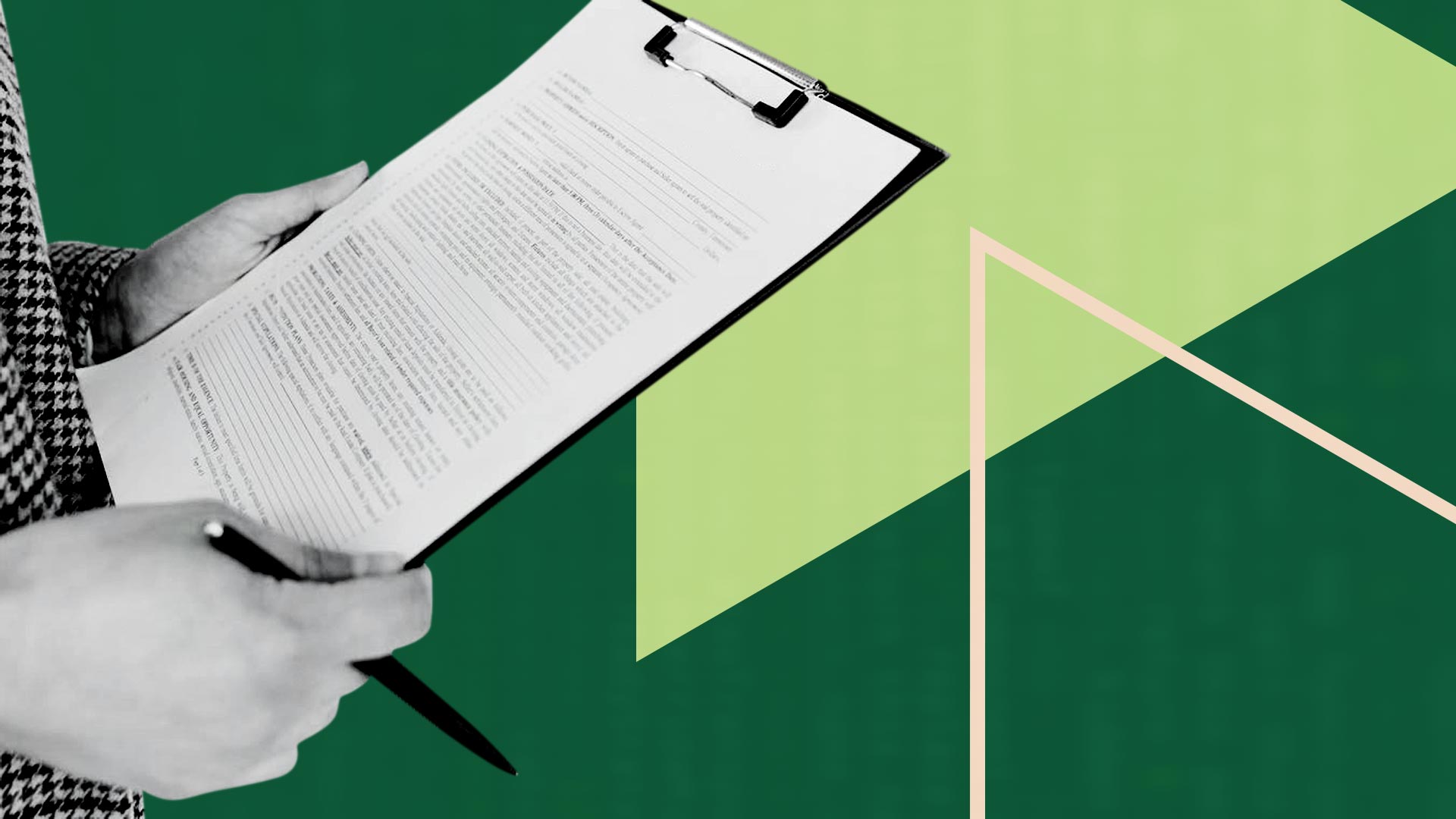A non-disclosure agreement is one of the most common legal documents out there. They are used by companies to protect confidential information and trade secrets. NDAs come in all shapes and sizes, with different clauses to protect different types of information. But just because they are common does not mean they are easy to write.
There are a lot of things to keep in mind when drafting a non disclosure agreement, as mistakes can mean opening oneself up to a world of trouble. In this blog post, we will cover the most important things to know about writing NDAs. We will start with an introduction to NDAs and their structure. Then, we will provide a step-by-step guide on how to write an effective non disclosure agreement.
After that, we will talk about the risks of poorly written confidentiality agreements. Finally, we will list common mistakes made while writing NDAs and describe how to avoid them. We will also provide advice on the use of legal AI for safe and efficient creation of non-disclosure agreements.
NDAs - a quick introduction
A non disclosure agreement, also known as a confidentiality agreement, is a binding contract between two parties – usually one disclosing and one receiving confidential information. It is a legal document that guarantees that the receiving party will not use, share or reveal the information shared under the contract to any third parties without permission from the disclosing party.
A good non disclosure agreement aims to protect competitive advantage and intellectual property. It guards a company's confidential information and prevents unauthorized disclosure.
Common use cases for confidentiality agreements
The most common use cases for non disclosure agreements are business transactions, partnerships, investments, and settlements. The point is to establish a confidential relationship when one party needs to share confidential information with another party, and ensure that each party's confidentiality practices will be respected.
What kind of information does an NDA protect?
Non-disclosure agreements are useful when a business needs to share sensitive information with another company, its employees, or contractors. Such information can include anything from customer lists, business plans and strategies, technical processes to trade secrets.
Non-disclosure agreements are used to protect confidential information related to business operations. This includes trade secrets, product development plans and processes, as well as financial information and strategies, business practices, and other types of business information. It also includes any other information that is not made publicly available and which could harm the disclosing party if revealed.
Intellectual property, including patents and copyrights, as well as a trade secret, can also be protected information under an NDA.
What cannot be protected by an NDA
Any information that becomes public knowledge, or that is already known to the receiving party prior to signing an NDA, cannot be protected by such a legal contract. Additionally, information that must be shared as part of a legal process cannot be protected. Finally, since NDAs are agreements between specified parties, they do not protect information shared with third parties unless those third parties have also signed a confidentiality agreement.
Types of NDAs
There are two major types of non-disclosure agreements. The first one is a unilateral NDA, which is used when only one party discloses confidential information to another. In other words, one side is the receiving party, while the other is the disclosing party.
The second type is a mutual or bilateral NDA, which is used when two or more parties exchange confidential information. This type of agreement sets out the obligations of all parties regarding confidentiality and non-disclosure.
A two-way non disclosure agreement binds two parties to keep the other’s information confidential. A three-way or multi party NDA requires at least one disclosing party and can accommodate multiple receiving parties.
NDA classification
- Patent/product development NDA: Used when a business is developing new products and wants to keep information related to the development process confidential.
- Employee/contractor NDA: This type of agreement is used to protect trade secrets and other confidential information that businesses share with their employees or contractors.
- Business transaction NDA: Also known as a merger & acquisitions, or M&A NDA, this type of agreement is used when two businesses are merging or transferring ownership between them.
- Investment/partnership NDA: This type of agreement is used to protect confidential information shared between partners and investors in a business venture.
- Settlement/litigation NDA: Used when one party shares confidential information with another party in order to settle or litigate a dispute.
- Job interview NDA: Used to protect the confidentiality of information shared during a job interview.
- Business sale/merger NDA: Used when a business is being sold or merged with another business.
What restrictions can an NDA impose?
Non-disclosure agreements can impose restrictions on the handling of confidential information. These include restrictions on reproducing, distributing, and disclosing the protected information. Furthermore, they can also stipulate a timeframe during which the receiving party is required to maintain confidentiality.
The structure of an NDA
A non-disclosure agreement usually follows a standard format, starting with introductory statements that specify the purpose and intent of the agreement, followed by definitions for key terms used in the document. The next section outlines the obligations of each party and may include clauses such as a confidentiality declaration, non-disclosure period, and list of confidential information.
In addition to the specific obligations of each party, the agreement may include provisions for dispute resolution or a clause specifying the law that will govern any disputes arising out of the NDA. It should also provide details regarding what happens if either party breaches the agreement. Finally, it should contain signatures and dates confirming that both parties to the agreement have agreed on its terms.
The anatomy of an NDA
When writing a non disclosure agreement, there are some key elements that should be present:
- a definition of what qualifies as confidential information;
- parties involved in the agreement;
- obligations and rights of those parties;
- time frame for confidentiality;
- acceptable ways to use the confidential information;
- consequences for breaking the agreement.
Writing an effective non disclosure agreement
Some businesses fail to protect themselves by preparing a non-disclosure agreement, but even those that do not make this mistake can have trouble with writing an enforceable, effective non disclosure agreement.
When writing an NDA it is important to ensure that the document accurately reflects the agreement between the parties involved, so it is important to pay attention to the structure and language used in the agreement.
Writing an effective NDA step by step
1. Define the purpose of the non disclosure agreement
For example, is this non disclosure agreement protecting trade secrets, proprietary information or business strategies?
2. Identify who will be bound by the NDA
Who needs to sign the non disclosure agreement?
3. Describe the confidential information that will be protected by the agreement
Make sure to include all relevant information in detail. If there will be any exceptions to the confidential information, make sure to state that clearly in the agreement.
4. Detail how the protected information will be provided to the receiving party
The means of delivery should be addressed in the NDA.
5. Specify the duration of the contract and its termination clause
Decide how long this non disclosure agreement is set to last, as well as when and how it can be ended, whether it is for a certain period of time, or until a certain event occurs.
6. Outline the restrictions on the use, disclosure and distribution of the confidential information
Detail what is allowed with regards to the confidential information. This can include the purpose for which the recipient may use the information, any limits on how and where it can be shared, and similar provisions.
7. Specify who will be able to receive the confidential information
Determine who is allowed to receive the confidential information and establish the process by which they can gain access to it. For example, the receiving party may need to disclose this information to their contractors or employees in order to make any use of it. If the NDA does not include provision for this, the party might end up violating the agreement.
8. Define the liabilities related to breach of contract
Specify who pays for damages or losses in case of an unauthorized disclosure or a breach of contract.
9. Use a tool like AnyLawyer to proofread the NDA draft
AnyLawyer is a legal AI tool that can help you to generate, review and edit contracts.
10. Get the agreement reviewed by a lawyer
To make sure that an NDA is legally valid, always have it vetted by an experienced attorney.
Risks of poorly written non disclosure agreements
It is important to remember that NDAs are legal documents and any mistakes or omissions can lead to costly legal issues. Poorly written non disclosure agreements can result in a few different problems, such as:
Failure to adequately protect confidential information
If key elements are missing or the agreement is vague and unenforceable, this will make it much harder to take legal action if necessary.
Breach of contract leading to financial loss
A breach of a non disclosure agreement can lead to a hefty financial penalty.
Loss of reputation and trust
If confidential information is not adequately protected, this will lead to loss of trust in both parties involved.
Common mistakes made when writing a confidentiality agreement & how to avoid them
When creating a non disclosure agreement it is important to pay attention to key elements and language used in order for the agreement to be legally valid. Common mistakes made while writing NDAs include:
1. Not including a non-circumvention clause
A non-circumvention clause is important to protect the disclosing party from any attempts to bypass their agreement and use the confidential information in an unauthorized way.
2. Neglecting the description of confidential information
Make sure to include an accurate and detailed description of the information that is to be protected by the confidentiality agreement.
3. Not including a clause on liability
It is important to define who will pay for any damages or losses in case of a breach of contract.
4. Reusing an old NDA
Reusing an outdated or generic NDA can lead to problems in the future as NDAs need to be tailored to each individual situation.
5. Mixing up party details
Make sure the parties’ names and contact information are correct. Companies sometimes use trade names that are different from their registered names - this information can be found in their incorporation documents.
6. Making the scope too broad
When defining what information is protected by the non disclosure agreement, be as specific and detailed as possible. Additionally, be concrete when covering the information recipient's behavior after the termination of the business relationship.
7. Forgetting about already known information
When drafting the confidentiality clause, make sure to exclude any information that is already known or publicly available, as it cannot be considered confidential or private. Additionally, a partner in a close collaboration may develop the same or very similar ideas and solutions on their own. In this case, it is also impossible to protect the information from the partner with a non disclosure agreement.
8. Insufficient signing authority
Make sure that all parties involved have the necessary signing authority to enter into an NDA. A company executive may not necessarily have the authority to sign a binding contract.
9. Choosing the wrong jurisdiction
Make sure to choose the right jurisdiction when drafting a non disclosure agreement, considering the country in which any court proceedings will take place.
10. Bloating the NDA
Contracts often require non-competition, non-solicitation, transfer of rights or license grant clauses. These additions are impactful, as they can limit market size or introduce additional costs. The kicker? They should not appear in the NDA, but in sales contracts. Make sure the NDA only includes what is needed, rather than everything but the kitchen sink.
Legal AI as a solution for safer & more efficient creation of NDAs
In today's digital era, legal AI can offer a convenient and efficient way to create safe and legally binding NDAs. Legal AI tools are designed with the help of experienced attorneys and use natural language processing algorithms to generate legally valid NDAs. They allow users to quickly and easily create agreements without worrying about making any mistakes or omissions. As a result, businesses can save both time and money while ensuring that their confidential information is safe and secure.
Additionally, tools like AnyLawyer offer features for analyzing specific clauses, suggesting changes, and highlighting potential issues. Our tool can be used to improve or adjust existing NDA templates, allowing for more time savings. This ensures that NDAs are valid and compliant with the applicable laws, helping to protect both parties from any potential legal consequences.
How to write a non disclosure agreement
By following the steps outlined above and taking advantage of legal AI solutions, businesses can ensure that their non-disclosure agreements are legally valid and effective. They will be able to protect the confidentiality of their trade secrets, proprietary information or business strategies, while avoiding any costly legal issues. By leveraging legal AI technology, businesses will also benefit from a faster, safer and more efficient creation process which will help them save time and money.




